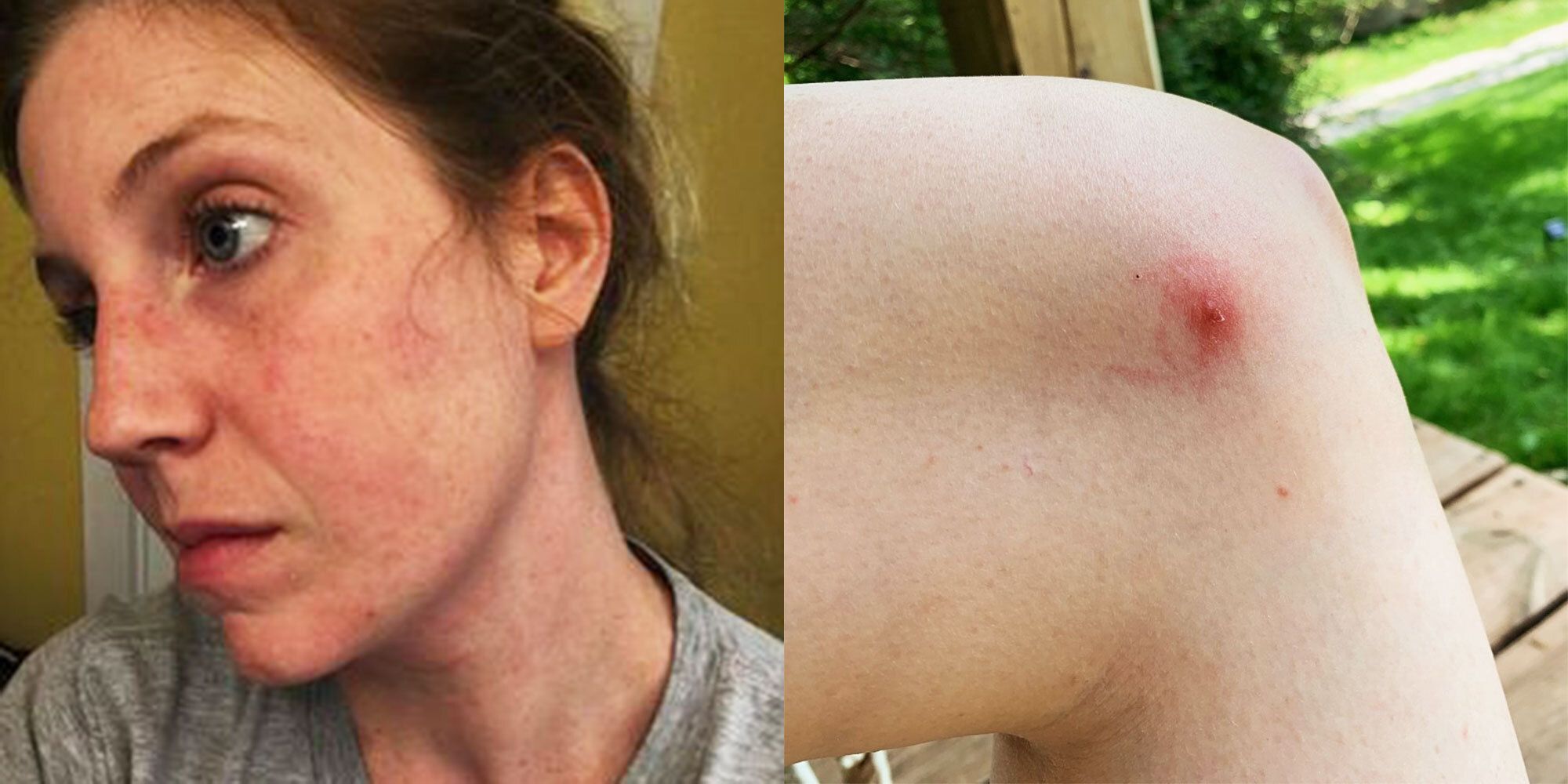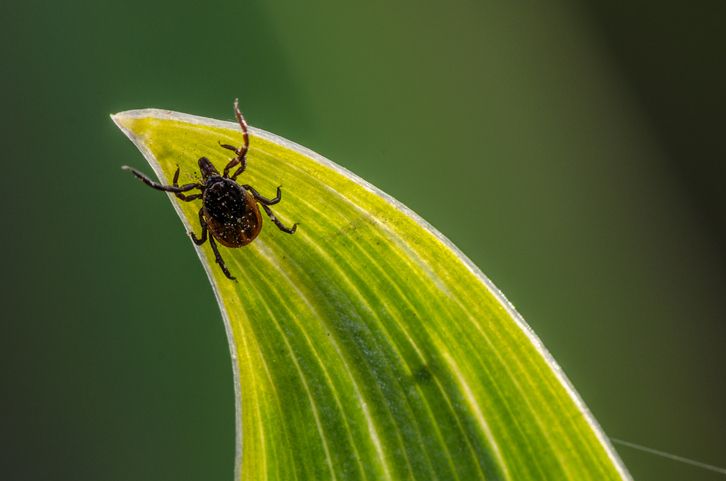‘My Ear Infection Turned Out To Be An Australian Paralysis Tick\u2014And I Contracted Typhus From It’
In November 2017, I returned from an incredible three-day hiking trip on the Scenic Rim, a beautiful stretch of rainforests and mountains in Queensland, Australia. But the top of my ear began to feel sore several days after I got back. Before my trek, I’d had an ear infection in the same ear, so I just figured it was acting up again.
As I de-boarded my flight back to Colorado, I actually discovered a little piece of coagulated blood in my ear lobe. That’s weird! I thought. After 14 hours in the air, I was super groggy. In the chaos of getting out of my aisle, I only had a split second to look at the clump before I had to hurry off.
Over the next few days, my ear got pretty swollen and sensitive. The irritated spot where I’d found that speck of blood started to act more like a pimple and began oozing puss (yuck). I also had this burning sensation that wouldn’t go away. It felt like I needed an ice pack on my ear at all times.
What really scared me was when the lymph node just in front of my ear on the side of my face became super sore. That pain was much worse than what was going on inside my ear, and it really freaked me out. Before then, I didn’t have any clue that I even had a lymph node there (!).
About a week after my trip, I went to the urgent care doctor I’d seen for my initial ear infection.
She said it was nothing, so I left. But a few days later, the lymph node beside my ear became so painful I couldn’t sleep on that side of my face. That’s when I started to suspect that the piece of “blood” in my ear may have actually been something else—a tick.
The trail I was on in Australia about a week and a half earlier was covered in paralysis ticks, these tiny, seed-shaped parasites that are responsible for about 95 percent of tick bites and most tickborne illnesses on the continent, per the Australian Department of Health. Although tick bites are typically NBD if you remove the tick quickly, more severe issues, such as paralysis or severe allergic reactions, are possible if they latch on for a longer period of time. As such, our guide had warned us to be on the lookout for them.
https://www.instagram.com/p/BbeyTSJDTj3/
A post shared by Whitney | adventure + travel (@whitwithgrit)
The final day of our trek had been particularly buggy (a few of us even found leeches on our legs). That evening, before I took a shower, I found a tick crawling around in my hiking clothes on the bathroom counter (cue the freakout). I don’t think I was wearing any bug repellent that day because there weren’t many mosquitos, and I had on dark clothing—another no-no because that makes it much tougher to see ticks crawling up your body. Still, I checked everywhere during my shower, including behind (but not inside) my ears.
Now, I was beginning to piece the mystery together. What if my ear problems were from a tick bite? I Googled “engorged tick”—and, yep, there it was. The images looked just like the hard piece I’d pulled out of my ear. Up close, it was the most disgusting thing I’d ever seen.
I called my primary care doctor to share my concerns. After seeing a slew of different doctors and trying a handful of antibiotics and a topical cream, I finally connected with an infectious disease specialist, who knew what was going on right away.
A few days later, the infectious disease doctor confirmed my suspicions, *and* that I had contracted typhus from that tick bite.
He knew right away based on the timing of my symptoms in relation to my recent hiking trip. Typhus sounds scary, I know. But the doctor immediately assured me that I didn’t have “World War II typhus,” as he described (a.k.a. epidemic typhus, a now-rare disease that killed millions of people in the past when it spread through body lice during times of war and famine).



Nope, I had Queensland tick typhus (QTT), a tickborne illness that typically causes mild symptoms like the ones I’d been dealing with—enlarged lymph nodes and fatigue, plus a fever, headache, or rash. If left untreated, though, QTT can also lead to life-threatening complications like kidney failure or severe pneumonia (so, it’s pretty scary in its own right!).
Thankfully, we caught my case relatively fast, so I didn’t have to worry about severe symptoms. After a round of the *right* antibiotic for typhus, the swelling in my lymph nodes and the burning in my ear finally began to go down, and I was good to go.
https://www.instagram.com/p/BcAQ3WKDrgK/
A post shared by Whitney | adventure + travel (@whitwithgrit)
A lesson I’ve learned time and again is to trust your gut and piece things together for yourself. Your doctor is probably doing their best, but at the end of the day, your intuition tends to serve you well when it comes to which clues are relevant, what tests you might need, and who’s offering you the best help. In my case, I had to realize that I didn’t *just* have symptoms of a recurring ear infection—something else was going on.
Stay the hell away from ticks, but don’t let them keep you from exploring.
Although you can find ticks just about anywhere in the United States, I grew up camping and horseback riding in Washington State, where I’d never before seen a tick. Living in Boulder, I’d never seen one in the Rocky Mountains until the summer of 2020, when I found one crawling around in my base layer as I was changing, and my friend and I started stripping and checking ourselves immediately. She said she’d rather have a bear in camp than a tick, and after my typhus scare, I totally agree.
Now, when I’m headed into buggy territory, I’m a big proponent of heavy-duty tick repellents that contain lots of DEET (the CDC recommends repellents with at least 20 percent DEET to reduce your chances of picking up bloodsuckers). However, I know many people prefer more natural options (in which case repellents made with picaridin, a black pepper derivative, can be a good alternative).
https://www.instagram.com/p/B1oTGGdl-Q4/
A post shared by Whitney | adventure + travel (@whitwithgrit)
While you’re out, I recommend wearing light-colored clothing and regularly checking areas ticks like to snuggle into like the waistline of your pants, beneath your socks, and in your ears and hair. If you can help it, don’t brush up against tall grasses or tree branches which are prime latching-on spots for ticks.
As for tick removal, the sooner you get it off of you, the better. If possible, use a pair of tweezers (or cover your fingers in a tissue or plastic bag) to snag the tick as close to your skin as you can. Then, slowly lift it away and clean off the bite area. If you notice any concerning symptoms like a rash or flu-like symptoms, seek treatment ASAP.
But the best advice I can offer is to not let something like this deter you from experiencing the great outdoors. It’s worth it. Sometimes, you just have an even more interesting story to tell when you get home.
https://www.instagram.com/p/Bj96cTnA4hR/
A post shared by Whitney | adventure + travel (@whitwithgrit)
Source: Read Full Article



